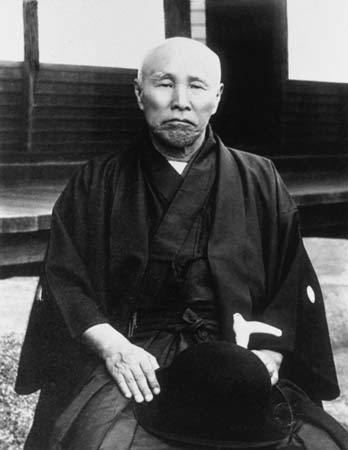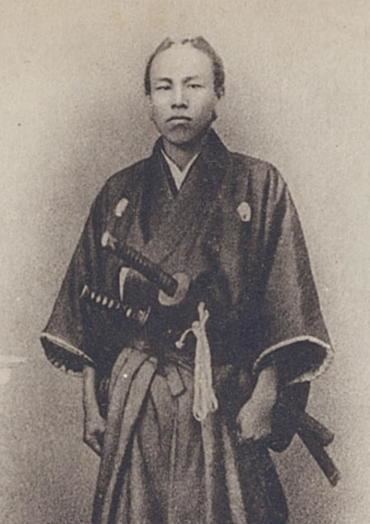Monarch Taisho Preceded by Ito Hirobumi Name Okuma Shigenobu Party Shimpoto | Preceded by Yamamoto Gonnohyoe Spouse Okuma Ayako Books Fifty years of new Japan | |
 | ||
Similar People Itagaki Taisuke, Ito Hirobumi, Okubo Toshimichi, Fukuzawa Yukichi, Kido Takayoshi | ||
Marquess Ōkuma Shigenobu (大隈 重信, March 11, 1838 – January 10, 1922) was a Japanese politician in the Empire of Japan and the 8th (June 30, 1898 – November 8, 1898) and 17th (April 16, 1914 – October 9, 1916) Prime Minister of Japan. Ōkuma was also an early advocate of Western science and culture in Japan, and founder of Waseda University.
Contents

Early life

Ōkuma was born Hachitarō, the first son of an artillery officer, in Saga, Hizen Province (modern day Saga Prefecture) in 1838. During his early years, his education consisted mainly of the study of Confucian literature and derivative works such as Hagakure. However, he left school in 1853 to move to a Dutch studies institution.

The Dutch school was merged with the provincial school in 1861, and Ōkuma took up a lecturing position there shortly afterward. Ōkuma sympathized with the sonnō jōi movement, which aimed at expelling the Europeans who had started to arrive in Japan. However, he also advocated mediation between the rebels in Chōshū and the Tokugawa shogunate in Edo.

During a trip to Nagasaki, Ōkuma met a Dutch missionary named Guido Verbeck, who taught him the English language and provided him with copies of the New Testament and the American Declaration of Independence. These works are often said to have affected his political thinking profoundly, and encouraged him to support efforts to abolish the existing feudal system and work toward the establishment of a constitutional government.

Ōkuma frequently traveled between Nagasaki and Kyoto in the following years and became active in the Meiji Restoration. In 1867, together with Soejima Taneomi, he planned to recommend resignation to the Shogun Tokugawa Yoshinobu. Leaving Saga Domain without permission, they went to Kyoto, where the Shogun then resided. However, Ōkuma and his companions were arrested and sent back to Saga. They were subsequently sentenced to one month imprisonment.
Meiji period political life
Following the Boshin War of the Meiji Restoration in 1868, Okuma was placed in charge of foreign affairs for the new Meiji government. At this time, he negotiated with British diplomat, Sir Harry Smith Parkes on the ban of Christianity and insisted on maintaining the government's persecution on Catholics in Nagasaki.

In 1873, the Japanese government removed the ban on Christianity.
He was soon given an additional post as head of Japan's monetary reform program. He made use of his close contacts with Inoue Kaoru to secure a position in the central government in Tokyo. He was elected to the first Diet of Japan in 1870 and soon became Minister of Finance, in which capacity he instituted property and taxation reforms that aided Japan's early industrial development.
He also unified the nation’s currency, created the national mint, and a separate Minister of Industry; however, he was dismissed in 1881 after a long series of disagreements with members of the Satsuma and Chōshū clique in the Meiji oligarchy, most notably Itō Hirobumi, over his efforts to secure foreign loans, to establish a constitution, and especially over his exposure of illicit property dealings involving Prime Minister Kuroda Kiyotaka and others from Satsuma.
In 1882, Ōkuma co-founded the Constitutional Progressive Party (Rikken Kaishintō) which soon attracted a number of other leaders, including Ozaki Yukio and Inukai Tsuyoshi. That same year, Ōkuma founded the Tokyo Semmon Gakkō in the Waseda district of Tokyo. The school later became Waseda University, one of the country's most prominent institutions of higher education.
Despite their continuing animosity, Itō again appointed Ōkuma to the post of Foreign Minister in February 1888 to deal with the difficult issue of negotiation revisions to the "unequal treaties" with the Western powers. The treaty he negotiated was perceived by the public as too conciliatory to the Western powers, and created considerable controversy. Ōkuma was attacked by a member of the Gen'yōsha in 1889, and his right leg was blown off by a bomb. He retired from politics at that time.
However, he returned to politics in 1896 by reorganizing the Rikken Kaishintō into the Shimpotō (Progressive Party). In 1897, Matsukata Masayoshi convinced Ōkuma to participate in his second administration as Foreign Minister and Agriculture and Commerce Minister, but again, he remained in office for only one year before resigning.
In June 1898, Ōkuma co-founded the Kenseitō (Constitutional Government Party), by merging his Shimpotō with Itagaki Taisuke's Jiyūtō, and was appointed by the Emperor to form the first partisan cabinet in Japanese history. The new cabinet survived for only four months before it fell apart due to internal dissension. Ōkuma remained in charge of the party until 1908, when he retired from politics.
After his political retirement, Ōkuma became president of Waseda University and chairman of the Japan Civilization Society, from which scholars' many translations of European and American texts were published. He also gathered support for Japan's first expedition to Antarctica.
Taishō period political life
At the request of the Emperor, Ōkuma returned to politics during the constitutional crisis of 1914, when the government of Yamamoto Gonnohyōe was forced to resign in the wake of the Siemens scandal. Ōkuma organized his supporters, together with the Rikken Dōshikai and Chūseikai organizations, into a coalition cabinet. The 2nd Ōkuma administration was noted for its active foreign policy. Later that year, Japan declared war on the Empire of Germany, thus entering World War I on the Allied side. In 1915, Ōkuma and Katō Takaaki drafted the Twenty-One Demands on China.
However, Ōkuma’s second administration was also short-lived. Following the Ōura scandal, Ōkuma's cabinet lost popular support, and its members held mass resignation in October 1915. In 1916, after a long argument with the Genrō, Ōkuma resigned as well, and retired from politics permanently, although he remained a member of the Upper House of the Diet of Japan until 1922. He was awarded the Grand Cordon of the Supreme Order of the Chrysanthemum in 1916, and was elevated to the title of kōshaku (侯爵) (marquis) in the kazoku peerage system the same year.
Ōkuma returned to Waseda, and died there in 1922. An estimated 300,000 people attended his funeral in Tokyo's Hibiya Park. He was buried at the temple of Gokoku-ji in Tokyo.
Honours
From the corresponding article in the Japanese Wikipedia
